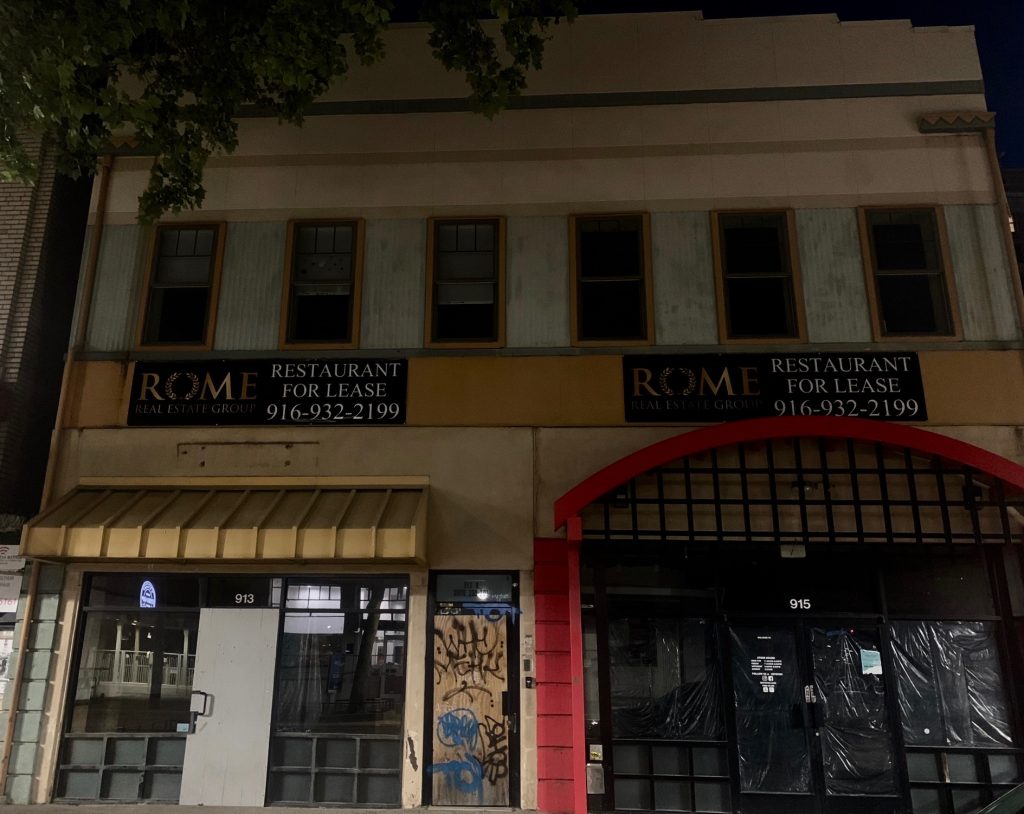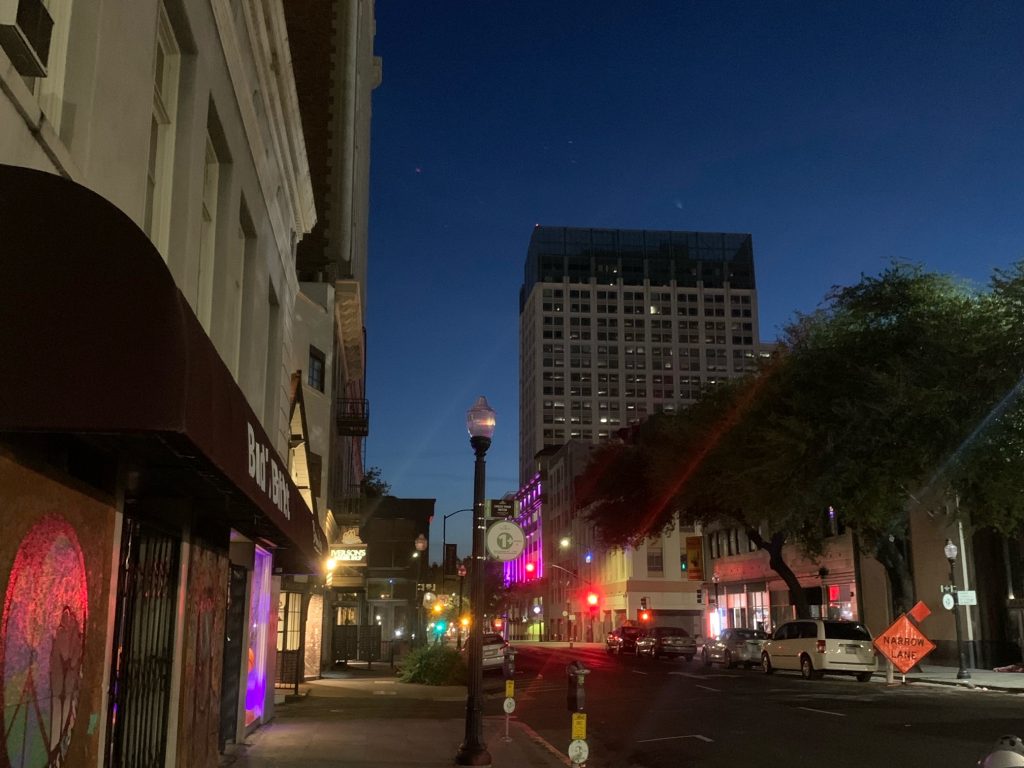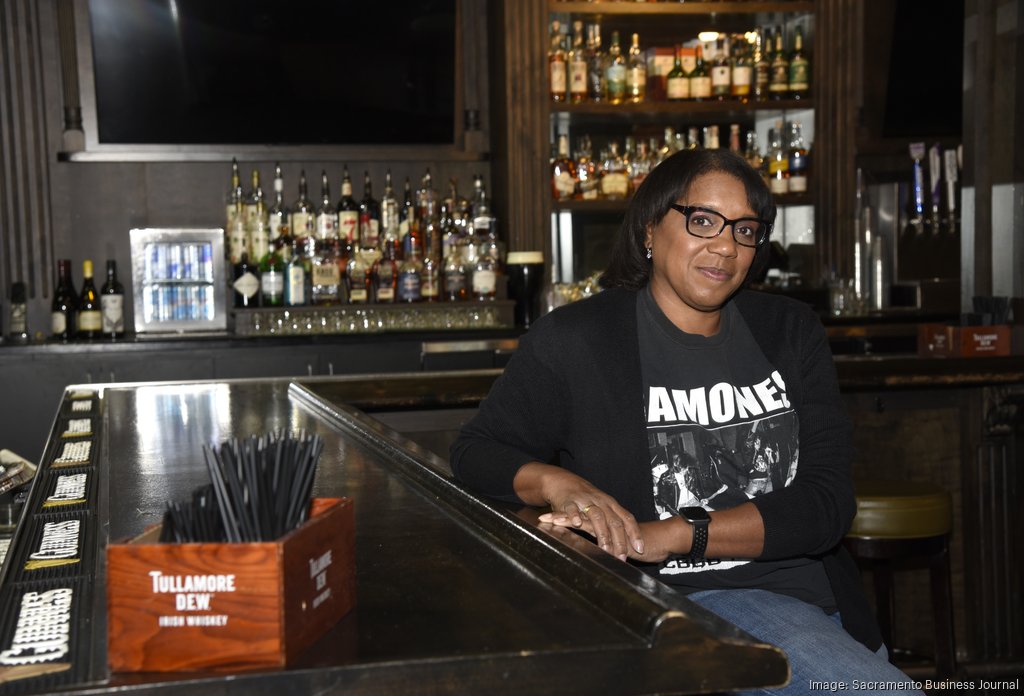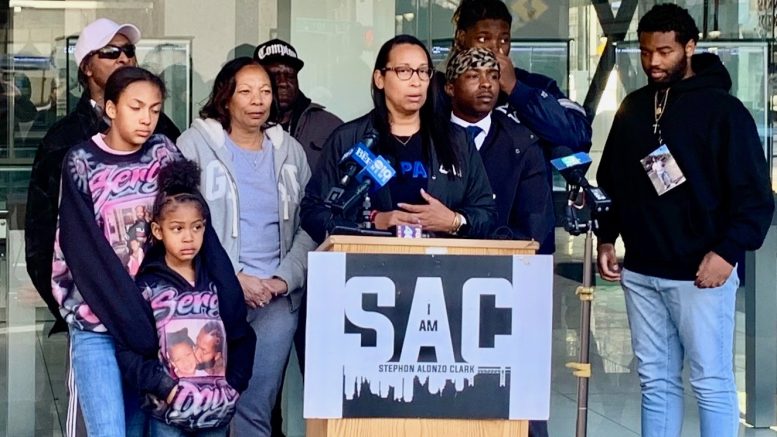New nighttime economy manager is the face of a multipronged approach to turn the tide
Leia Schenk didn’t show up to K Street on April 3, 2023, to make reporters or politicians feel better about themselves.
The head of Empact, a youth advocacy and crisis response group, Schenck didn’t seem to find any reason to sugar-coat her words while leading a remembrance of the worst mass shooting in Sacramento history. That included raising the question of whether some journalists and elected officials have somehow lost the thread of its magnitude. Schenk was there on that bloody morning, standing with victims’ family members for hours as they waited for the bodies to be moved. Now, she was returning to the same spot a year later, this time with two little girls who’d lost their father in the bullet-sprayed carnage.
“In responding to calls such as this, you never really know the story,” Schenk told the faces behind a battery of cameras. “I want to hone-in on this when it comes to Media because these were real lives. All these bodies that laid on the ground: This is real life. This is not a movie. This really did happen. Eighteen people shot. Six people lost their lives that early morning. It was horrific. It was a tragedy. And we can’t see it as anything other than that.”
Behind Schenk, nodding his head, was Stevante Clark, whose older brother De’Markus McKinnie was shot-to-death in a blur of community violence long before his other brother, Stephon, became a national news story. Clark stepped forward and, with a kind exasperated passion punching in his voice, began to say the quiet part out loud — a thought that’s been roiling the consciousness of people who live and work in the city’s urban core.
“Half the community don’t even feel safe Downtown anymore — half of the community don’t want to even come down here anymore because there’s still been numerous shootings after that — you know that, right?” Clark stressed. “If you can’t be safe Downtown, if you can’t be safe in the heart of Sacramento — damn near blocks away from the State Capitol and the mayor’s office — where the hell can you be safe?”
It’s the inescapable question for true-believers in the future of Downtown, particularly at night. The 169-year-old bones of the place are made of historic theaters and auditoriums, an array of dynamic clubs and restaurants and one of the nation’s top-tier entertainment arenas, all dotting its grid that reaches for a celebrated riverfront. But it’s also a neighborhood where Starbucks has removed the furniture from some of its cafes because there have been so many assaults and confrontations aimed at its employees. The situation looked especially bleak in the dark hours of last Sunday, when a fight broke out just a block away from where the K Street mass shooting happened — on L Street next to the State Capitol — and led to a man getting shot and killed. In the last 15 months, seven other homicides have happened in the Downtown-Midtown area, too, not counting the mass-casualty event on K Street.
An array of public servants in Sacramento say that they’re not giving up on a vision of a vibrant and safe Downtown being core to Sacramento’s identity. Lately, their efforts have coalesced around a specific longtime employee who’s in a new role since the mass shooting: Tina Lee-Vogt. The veteran staffer has previous experience with the nuances of entertainment security, live performance logistics, fire prevention and safety codes — and where the police stand in navigating those issues. As Sacramento’s new nighttime economy manager, Lee-Vogt is essentially being tasked with ushering in new collective strategies to build a growing public confidence.
“I make the comparison to the conductor of an orchestra,” Lee-Vogt said a few days after the memorial at 10th and K. “My job is to make sure all of the instruments come together and play in harmony.”
These dark streets

Studying the nature of a streetscape doesn’t grab headlines. However, in the wake of the fight that led to a multidirectional gun battle on April 3, 2020, city officials began analyzing the layout and lighting of the area, as well as how the businesses’ operations interacted with it. They wanted to know what factors might have contributed to the chaos. The question is relevant to Downtown’s broader crime trends.
Sacramento’s code enforcement officers determined that there were entire sections of K Street that were unnecessarily dark and shadowy after sundown. That has since been changed. When they studied various surveillance videos connected to the mass shooting, another obvious issue was that a large crowd of around 80 people had floated onto the street between the venue London and Sharif Jewelers just as all the clubs were closing down. It was during this loitering window, reportedly, that the catastrophic confrontation was ignited. Since then, Sacramento Code Enforcement has added its officers to the police department’s nighttime entertainment team for a very specific reason — to monitor club and crowd control conditions so that the police are free to focus entirely on immediate threats.
“You have people who are intoxicated and hanging out, and oftentimes that breeds confrontation,” said Jose Mendez, Sacramento’s code enforcement manager. “So now code enforcement is assigned to really is dispersing those crowds and moving the food vendors away from any entertainment venue, to make sure there’s not a mass exodus of folks.”
Code Enforcement is also bolstering the police by making sure that nightclubs have a city-approved manager onsite and the appropriate number of professional security guards. But Mendez emphasizes that his officers aren’t trying to be the city’s “hammer,” but instead get voluntary compliance through outreach. He said his department understands it’s a hard time for small businesses and venues, acknowledging the last thing the city needs is more of them going out of business: That would only lead to additional empty storefronts Downtown and more unlit, ominous corridors at night. To describe the balancing act, Mendez points to a policy the city passed this year that would have required venues to hold onto 90 days of security surveillance footage at a time. Venue owners quickly realized this policy was going to cost them roughly $10,000 a month in cloud storage fees. After discussing that situation with the police, Mendez and his team got the threshold lowered to 30 days, which he said ultimately cut the expense by more than $8,000 a month for the owners.
Since code enforcement thinks well-lit, well-trod, activity-rich streets make for a safer Downtown, it is working closely with Lee-Vogt on trying to get new businesses up and running while helping the existing ones understand compliance enough to stay safe — and stay afloat.
“Tina is a point of contact for the venues,” Mendez observed. “In getting an entertainment permit, there’s a number of agencies that you have to go through. It starts with code compliance and then it’s routed to the police department, then to the fire department, then to the building department, and the list can be pretty extensive. I think part of Tina’s role is providing informal consultation with a business owner that may be a little overwhelmed. They may be feeling like, ‘Hey, this is the line? I don’t even know where to start!’ The beauty of having Tina in this new position now is that she’s helping them with the process.”
Sacramento’s Department of Conventions and Cultural Services and its Office of Arts and Culture is also working with Lee-Vogt. Its leader, Megan Van Voorhis, is tasked with long-term strategies around art and live performance venues, as well as the entertainment uses for everything from the Memorial Auditorium to the streets of Old Sacramento. Van Voorhis said that her team is trying to channel its resources and know-how into the issue of vacant storefronts and gloomy, empty streets at night.
“If there’s a retail corridor, or an arts and entertainment corridor, that’s dark and unlit and someone’s walking down that way as they’re heading for something else that’s happening, then how does that affect the experience in the district?” Van Voorhis noted. “So, there’s a lot of opportunities to engage the arts to address that. It’s a question of how do we work with Code and Planning?”
When it comes to vacant buildings and desolate blocks, Van Voorhis’s team is currently researching everything from pop-up destinations to recent changes in alcohol licensing, which could entice new all-age, music-centric venues to open in Downtown. She said her team will be coordinating these efforts with Lee-Vogt because the nighttime economy and creative economy are interconnected.
“It’s critical that our department work closely with other city departments to ensure policy and resources support the climate for creative activity.” Van Voorhis mentioned.
The fall-out from that night

No one in city government has fielded more questions about April 3, 2022 than the Sacramento Police Department. In the aftermath, police arrested three suspected shooters — Smiley Martin, Dandrae Martin and Mtula Payton — and started having their bicycle units work on Friday and Saturday nights until 3 a.m. as back-up to the entertainment officers. Over the last year, the police have also pulled specialty units from other corners of the city to Downtown for larger events, or on any night when a big turn-out is expected. But Sgt. Zach Eaton warns there’s a balancing act when it comes to that kind of personnel shuffle.
“We don’t want to pull our resources to Downtown while forgetting about our other neighborhoods because, quite honestly, it’s those other neighborhoods that have the highest violent crime rates, not Downtown,” Eaton pointed out. “It’s about finding that balance of giving Downtown the attention that it needs while also not forgetting about our other communities.”
He added, “Looking back at K Street, it shocked everybody. … But I was a gang detective for years in our department, and I can tell you that some of the gangs involved in that shooting are gangs where their historically claimed territories are in our most-violent crime neighborhoods.”
Knowing that, Sacramento Police are now directly funding community-based organizations like Brother 2 Brother Mentoring, a nonprofit that specifically works with youth at risk of committing or falling victim to violence. The department views this as an approach to take into consideration the root causes of crime, including high poverty and low employment rates, addiction, anger management, domestic violence and trauma. Downtown’s councilmember, Katie Valenzuela, has been urging more long-term solutions to community violence along these lines.
“We actually have community-based organizations that will dispatch themselves to the Downtown corridor, for example, or Old Sacramento, and they will be present in areas where they feel like there’s the potential for violence,” Eaton explained. “And in those cases, they’ll proactively contact people in their community and try to mitigate the violence without the police even getting involved. I know they’re keeping data on how many times they respond out. … I can tell you they’ve been doing it at Arden Fair Mall for years now, for the day after Christmas, and ever since they’ve been responding, we’ve had really good success at the mall on mitigating violence — mitigating huge fights.”

Tina Lee-Vogt. Photo by Dennis McCoy
Throughout April, the police department has also been working with Lee-Vogt to provide free active-shooter training for Downtown and Midtown businesses. On a similar front, Lee-Vogt has been working with WEAVE to provide nightclubs, bars and other venues with training sessions on how to spot domestic violence situations. The Sacramento County District Attorney’s Office has identified a strong correlation between stalking and domestic violence and homicides that occur in the county, including sometimes in public settings.
“Sometimes someone sees something happening, but they don’t know how to respond,” Lee-Vogt said. “This is to give our businesses more tools to help with that.”
In terms of the potential toll that crime concerns are taking on Downtown’s livelihood, Lee-Vogt is conducting a comprehensive survey and assessment of its whole nightlife ecosystem.
“Once it’s done, it will be presented to the City Council,” she confirmed, “and we can put together real strategies for moving forward.”
This story is part of the Solving Sacramento journalism collaborative. Solving Sacramento is supported by funding from the James Irvine Foundation and Solutions Journalism Network. Our partners include California Groundbreakers, Capital Public Radio, Outword, Russian America Media, Sacramento Business Journal, Sacramento News & Review, Sacramento Observer and Univision 19.



Be the first to comment on "As murders continue Downtown, a city looks for answers"